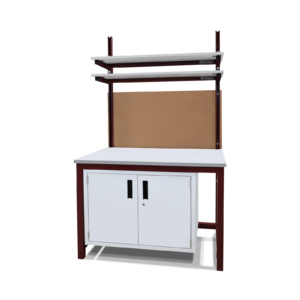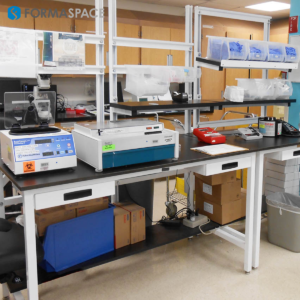The Rise of “Bossware” — Employee Surveillance Software that Claims to Track Employee Productivity

Here’s an easy quiz: can you name some of the software technologies that got a big boost in adoption rates during the pandemic?
Probably the first one that comes to mind is online teleconferencing solutions, such as Zoom.
Then you might think about home delivery apps – such as Uber Eats or Door Dash – that delivered restaurant food orders right to your door.
Do any others come to mind?
You might not be aware of it, but during the pandemic, there was also a big surge in companies adopting employee surveillance software – designed to keep track of employees working from home (WFM).
Derisively dubbed “bossware” by critics, these software platforms have become a mainstay at many private companies, government agencies, and even schools that offer remote learning.
A survey of 1,250 US companies by Digital.com found that:
- 60% of companies with employees who work remotely are using monitoring software to track employee activity and productivity
- 81% of companies that implemented monitoring software saw an increase in worker productivity
Proponents of bossware tout its advantages, which include:
- Keeping track of employees (whether at home or the office) so they can be contacted and accounted for quickly, such as during an emergency
- Allowing employees working from home to “demonstrate” they are equally as productive at work as those who come to the office
- Providing employers with detailed records of an employee’s productivity, in case there is a lawsuit brought about by a terminated employee
Popular Bossware Solutions
- ActivTrak
- Controlio
- DeskTime
- Hubstaff
- iMonitorSoft
- Interguard
- SentryPC
- StaffCop
- Teramind
- Veriato Cerebral
- VeriClock
- WorkExaminer
- WorkPuls
Could Bossware Actually Be Counterproductive?
You might have noticed something interesting in our list of bossware software vendors.
There aren’t any top-tier tech companies on the list.
Why is this? It may be because employee surveillance is a topic that’s a little too hot to handle for high-profile tech companies.
Microsoft already got its hands burned back in 2020 when they added a new feature to Microsoft 365, which purported to identify which employees achieved the best “Productivity Score.” But the company quickly dropped the feature and apologized – thanks to a backlash that its productivity criteria were too simplistic and would lead to unnecessary competition among individual workers.
Other tech giants have had to tread very carefully as well.
In 2020, the technology consultancy giant PwC announced it had developed a facial recognition tool to monitor employees working from home. After facing criticism, PwC responded that the new technology was not aimed at workers generally but was, in fact, a prototype “to support the compliance environment required for traders and front office staff in financial institutions.” In other words, they were obligated to develop the tool for finance companies who needed to comply with trading regulations. Nothing to see here!

The Japanese tech giant Fujitsu took this one step further, announcing in 2021 that it had developed new AI-based facial recognition tools “that can capture and quantify with high accuracy the degree of concentration when a person is performing various tasks.” In other words, the camera that’s mounted to your computer can look at you and decide if you are concentrating or hard enough on work or not. Fujitsu also rowed back, pointing out that the technology was still in the research stage and not ready for prime time.
These examples are telling. Big tech doesn’t want to get caught up in what could become a very contentious workplace issue. And it also reminds us of the old saying:
Just because you can doesn’t mean you should.
Will there be a backlash by workers against employee surveillance software?
The answer is yes, eventually, but it hasn’t seemed to come to a boil just yet.
Why the delay?
It turns out that most employees are blissfully unaware of the existence of bossware.
For example, back in 2020, the UK trade union Prospect surveyed its membership and found that just under a third had even heard of camera tracking and keystroke monitoring technologies.
But, once informed of the possibility, 80% of respondents were uncomfortable with camera tracking, and 66% were uncomfortable with keystroke monitoring.
So we predict it is just a matter of time before there is a widespread uproar among employees – once they become aware of how potentially invasive employee surveillance software can be.
What will be the outcome? Many analysts suggest this will create an unnecessary rift between workers and management, with constant employee monitoring fomenting resentment – resulting in lower productivity and higher turnover as employees leave for companies with less onerous/invasive oversight practices.
Other technology analysts also call into question the very premise upon which the employee surveillance products are based – are they measuring the right things? For example, is it really true that the employees who return promptly to their desks after lunch are the most productive? What if they have a spontaneous meeting with a colleague in the hall to solve a problem or brainstorm a new idea?
Similarly, is it true that the employees who send out the most email are getting the most work accomplished? Perhaps they are also generally responsible for more mistakes and have to send out additional emails to correct a situation they caused.
And what about facial recognition software trying to determine whether you are concentrating? Perhaps the employee that takes a walk around the block is the one that will prove to be the most productive one of all.

Is Bossware a Potential Security Risk?
There is another concern about employee surveillance software that gets less attention.
It may prove to be a serious security risk.
Many bossware applications bear more than a passing resemblance to illegal spyware; in fact, many programs require temporarily turning off anti-virus tools to enable them to be installed in the first place.
Once installed, many bossware applications are set up to read every document, track every webpage, capture every password typed on the keyboard, etc. – all of which could be very sensitive information if it fell into the hands of hackers.
Of course, many companies that choose to implement bossware are doing it for the express purpose of protecting sensitive corporate information and trade secrets. But given the widespread hacking of enterprise software in recent years (viz Solarwinds), IT professionals should ask themselves some very pointed questions about whether they might be inadvertently creating a new, dangerous entry point for hackers to pierce the corporate network and gain access to some of the most sensitive company data imaginable.

Legal and Regulatory Considerations for Using Bossware
So what are the legal and regulatory rules governing the use of employee surveillance software?
It depends on where you live, and frankly, some of the rules that could apply are yet to be tested in the courts.
Let us explain.
In the US, until very recently, there appeared to be no specific laws governing bossware.
(That doesn’t preclude some creative lawsuit strategies coming down the pike however… we could well imagine an attorney filing a brief that an employer recording a worker via a camera and microphone could constitute a violation of phone tapping rules in those states that prohibit it without both parties consenting.)
But what we’re more likely to see is the adoption of new rules, such as the new law that went into effect his month (May 2022) in New York state that requires employers to disclose to workers that they are being monitored by surveillance software. The law requires employers who monitor employees to:
- Provide written notice to newly hired employees and obtain their written acknowledgment of that notice.
- Post a notice in a conspicuous area in the workplace.
If you live or work for a company based outside of New York state, there aren’t any similar regulations that we are aware of, but this issue may likely spur new rules in the near future.
Meanwhile, in Europe, the European Union has (as they are wont to do) been studying the issue quite thoroughly; it published a comprehensive report on Monitoring and Surveillance of Workers in the Digital Age, which zeroes in on the key technical and ethical issues surrounding electronic monitoring of employees.
It’s also possible the EU’s existing GPRD internet privacy rules might apply to employee surveillance software as well – particularly features such as taking photos of workers in their homes and capturing their keystrokes at the computer – but this has not been tested in the courts as of yet.
However, that may be a moot point, as the EU is contemplating even more comprehensive regulations over AI-based software technologies, which would likely add specific regulatory guidance for employers seeking to implement employee surveillance systems.
Do We Need an Employee Surveillance Bill of Rights?
Critics of bossware are starting to organize to make their case against employee surveillance technology.
Worker advocacy groups, such as the Center for Democracy and Technology (CDT), are lobbying for an extension of OSHA standards to “cover the foreseeable consequences of bossware.”
The Electronic Frontier Foundation (EFF), heretofore probably best known for its advocacy of open source software, has also taken a strong stand, calling bossware invasive and secretive and characterizing it as an unwelcome disciplinary technology.
Is there a middle ground to be found here that allows employers to monitor their workers ethically, including respecting their privacy?
That’s the question posed by Reid Blackman, writing in the Harvard Business Review. Reid outlines the basis of what we think could become the starting point for a new “Employee Surveillance Bill of Rights,” including:
- Be careful and deliberate in the selection of metrics for measurement. Do they make sense?
- Being transparent with workers about what is monitored and why. Do nothing in secret.
- Using a carrot and stick approach, e.g. balancing benefits and rewards with monitoring requirements.
- Be realistic that even the best workers will have off days.
- Avoid bias (whether unintentional or not) against junior employees or minority groups.
- Cut back on monitoring as much as possible, for example, when few issues are present.
(You might be interested in reading Reid’s upcoming book, Ethical Machines, which will be published in July 2022.)

There are a few other issues we’d suggest the need to explore further when fleshing out an equitable “Employee Surveillance Bill of Rights,” including:
- Are managers that rely on AI-based tools to evaluate their direct report abrogating their own role in providing leadership through personalized observation and coaching?
- Is it ethical to use facial recognition technology to draw inferences about employees’ intentions and attitudes toward work?
- What about collecting workers’ social media account credentials and scanning their posts to glean information about their attitudes and opinions?
- Who collects the personal employee data, and where is it stored?
- When it comes to installing surveillance tools, what is the distinction between employer-provided computers and BYOD equipment provided by the employee? Does this mean a worker-provided cell phone will monitor the employee outside of work?
- What about the privacy of other family members at home who may be inadvertently recorded by surveillance software in home offices?
- How long would personal information collected from workers be stored? Could it be subject to requests from law enforcement?
- Could future employers demand access to past employee surveillance records as part of a job interview?
- France, Italy, Ireland, and Spain have passed “right to disconnect” rules that allow workers to sign off from office emails and texts after hours. Is a similar rule useful for employee surveillance systems?
We’re curious to get your feedback. What is your take on employee surveillance systems?
Whatever the Future of Work Brings, Formaspace Will Be There
If you can imagine it, we can build it, here at our Formaspace factory headquarters in Austin, Texas.
Talk to your nationwide manufacturing rep today to find out more about our American-made, custom furniture solutions, designed for wherever you choose to work.








